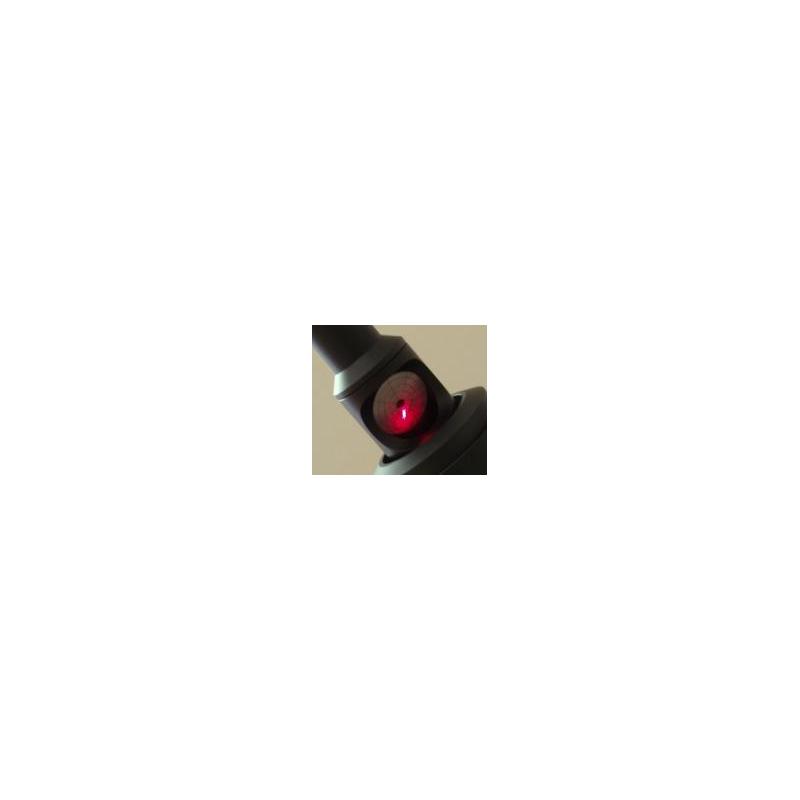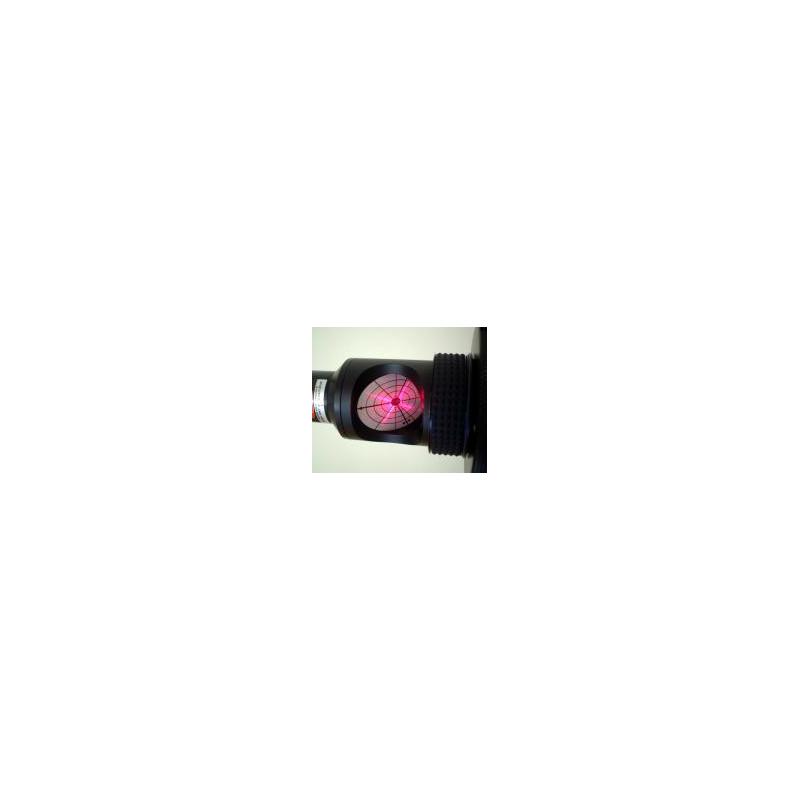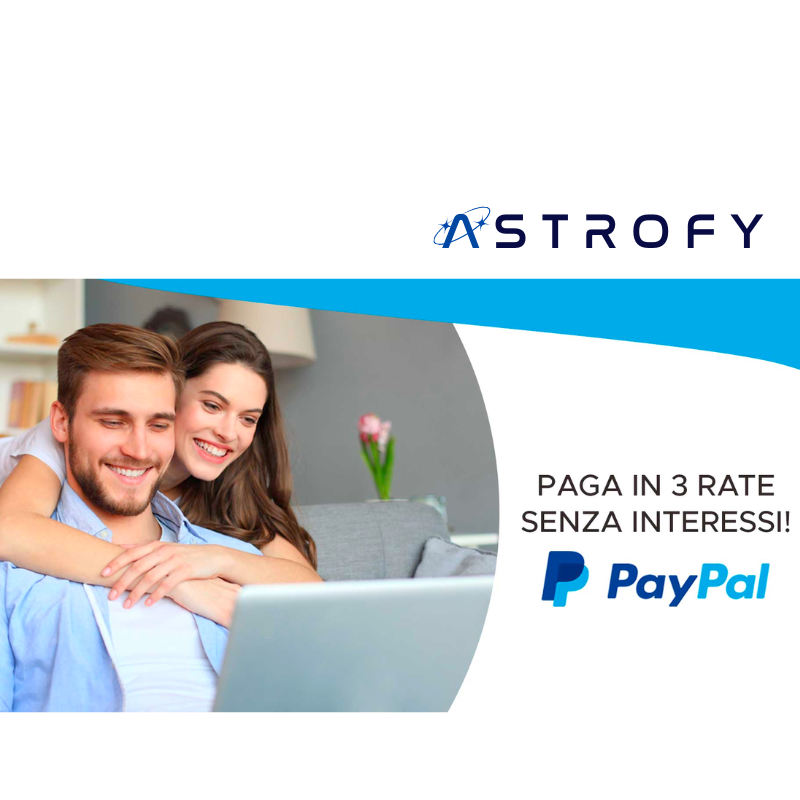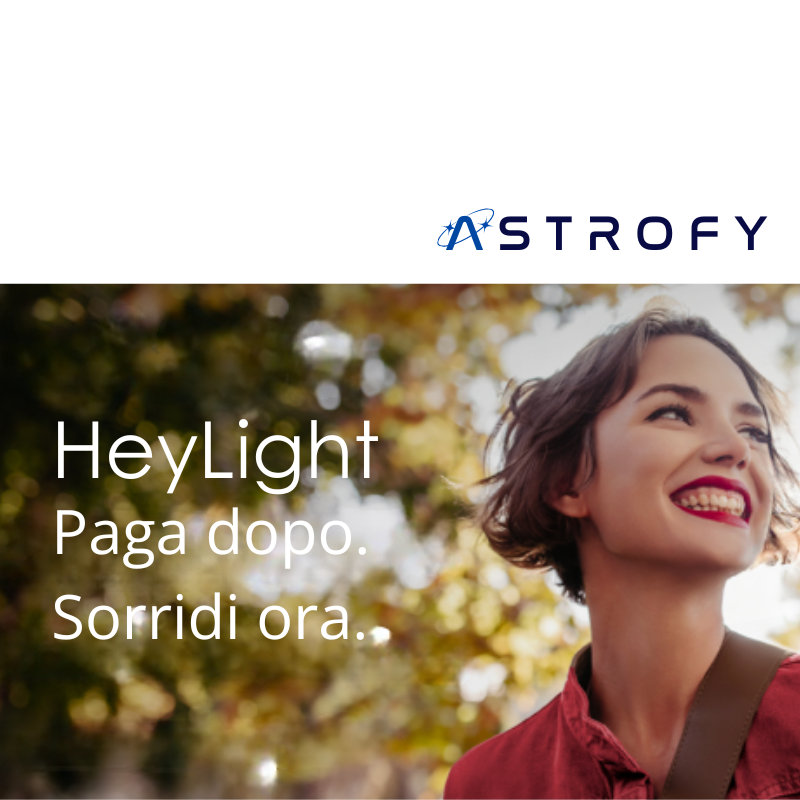Hai bisogno di informazioni sul prodotto?
Description
Hotech Laser Collimator - Collimate your telescope without laser oscillations
Imagine: You are observing with your telescope but something is wrong. What happens? Why do stars no longer appear so well defined? The planet Jupiter - something is wrong there too, the contrast is very bad. The night is clear, but the observation is not at all beautiful. Obviously it is very likely that the telescope is not collimated well. You have to do something, you have to recollimate the telescope: but how? The simplest way, with a laser.
A laser that centers itself
Many unpretentious lasers have the problem of moving inside the focuser. Collimation is ruined. This is not the case with the Hotech collimator: Thanks to the self-centering system, movement of the laser is avoided. No screws are required to attach the collimator to the focuser. Many focusers have slight deviations in diameter dimensions. With the Hotech laser this problem is also easily solved.
You can collimate the telescope already placed on the mount, the parallel position of the laser is ensured.
- With 45° plate
- With the integrated 45° plate a single person can carry out collimation in a few minutes. Once the laser spot is centered on the center mark of the main mirror, the beam is reflected back into the laser device.
- The extremely precise projection of the dot is reflected on the graduated surface of the plate. At this point it is very easy to conclude the collimation of the main mirror.
The advantages at a glance:
- precise collimation: self-centering laser
- the laser is held perfectly in the center without oscillations
- very well defined laser point
- 45° plate for problem-free collimation
- The 2“ variant is shipped with a 2“ adapter, equally self-centering
- available in the 1.25" or 2" variant (see product description)
- long lasting with 3V battery
- sturdy case for storing the laser
Cross pattern
The Hotech laser in this variant has a cross grating. It comes into play when the laser spot returns to the plate. If the laser spot disappears in the central hole of the collimator, the crosshair allows you to make small corrections.
HOTECH SCA laser collimator
Self-centering mechanism (SCA)
The HoTech laser collimator stands out from all other laser collimators due to its self-centering technique (SCA). This mechanism allows precise and REPEATABLE installation on 1.25" and 2" focusers of all brands, thus offering accurate collimation. All laser collimators currently on the market have a basic problem, the gap between laser collimator and focuser. It is a well-known and widely debated problem among astronomers, but until now there have been no definitive solutions. Regardless of how much the tolerance between the laser collimator and focuser was reduced, a small amount of space was still needed to install the collimator. And once the collimator was inserted, this space became a problem. The laser collimator attaches with one or more thumbscrews or a compression ring. Both systems present critical issues, i.e. insufficient off-axis (axial) adjustment and none in parallel axis, which instantly nullifies the precision of the collimator along the entire optical axis. The self-centering mechanism intelligently eliminates focuser waste by compressing the integrated rubber rings. By doing so, the diameter of the rings expands and compensates for the gap. Because a ring expands its diameter radially to compression, the laser collimator is automatically centered in the focuser tube. More importantly, the self-centering laser collimator can be locked onto the focuser to repeat the setup and ensure accurate collimation.
The ultimate, self-centering adapter has three key functions. First, the compressible rings compensate for the waste of almost all focusers. Second, it automatically centers the laser on the focuser. Third, it has at least two circular contact points equally redistributed on the internal surface of the focuser to avoid oscillations and movements. Once the deviation has been eliminated, you can quickly collimate the telescope, confident that you will always obtain ideal collimation.
Collimator problems:
- Thumbscrew waste
- Compression ring waste
Problem solved with the SCA self-centering technique
- The self-centering mechanism eliminates waste
All tubes have minimal waste. A larger diameter is required to be able to insert eyepieces or adapters of any kind. When inserting the collimator, the space between the tube and the inserted device became a problem. The rubber rings of the self-centering mechanism expand radially to compensate for this gap. This allows you to mount the collimator stably and make it an integral part of your telescope for a safe and repeatable installation.
- The self-centering mechanism keeps the laser perfectly parallel to the focuser.
The patented O-rings ensure a solid and homogeneous 360-degree grip on the internal surface of the focuser and keep the laser perfectly parallel to the focuser tube, eliminating any possible error due to movements or oscillations typical of the traditional thumbscrew locking mechanism.
- The self-centering mechanism solves the precarious tightening of thumb screws or compression rings.
The optical axis moves when inserting a device blocked by a thumbscrew. In some cases, low-quality compression rings can cause movement when tightened onto the pipe, due to the gap between the compression ring, internal groove and irregular ends of the clamping screw. The self-centering mechanism adapts the collimator itself without resorting to thumb screws or compression rings.
- The self-centering mechanism compensates for tube imperfections.
Small imperfections within the tube such as dents, scratches or waviness are compensated for by the rubber rings which precisely center the collimator within the tube. In addition, even if the circumference of the tube is slightly deformed, with an egg shape, the rubber rings of the self-centering mechanism compensate for the differences and precisely center the collimator inside the tube. A metal clamp cannot conform to warped lines and compensate for imperfections in the pipe to have a solid grip.
Other features of the self-centering laser collimator:
- 45° plate with laser engraved grating
During collimation, the grating plate highlights the laser return point with clear references. This allows you to align the primary mirror from the back of the telescope without having to continually move in front of the telescope during collimation operations. If you work without a grating plate you cannot collimate the main mirror in real time based on the laser spot. In other words, by continuing to move back and forth to check the effects of the changes you have made, it is easy to get confused as to which collimation screw you have adjusted. In the end, a lot of time is lost to complete the collimation and the principle of quick and easy laser collimation is nullified. HoTech understands how important this is, so the plate is a standard feature of our laser collimator. All astronomers deserve to have it without additional expense. Furthermore, the reticle on the plate is laser engraved to ensure long life and maximum visual result. Unlike other collimators, the reticle is not a sticker that peels off over time or paint that scratches off or fades. We understand that you are spending money on a precision instrument that is supposed to be of quality.
- Well defined laser spot.
Having a well-defined point is the key to good collimation. If you compare the laser dots of collimators from different manufacturers, you will notice that most of the dots are coarse and not exactly the well-defined dot you imagined. This means that when you need to center the dot you have to do a bit of guessing, not only to center the laser dot in the reticle but also to center the dot itself. This makes no sense if you use a laser collimator due to the advantages offered by the laser beam, "which has low divergence, so the beam does not undergo significant variations at short propagation distances." In other words, the size of the beam within the collimation distance (from the collimator to the main mirror and back to the plate) should always be that of a fine point. As is known, many manufacturers of laser collimators are not full-fledged laser manufacturers. They simply mount a module on a ready-made laser pointer and align the laser in a tube without considering what the REAL applications of use are, i.e. the operating distance for the size of the laser beam. For more than 10 years HoTech has been designing and producing laser modules and systems for industries in various sectors. We know in detail how a laser beam should work. We limit our beam to the finest size keeping in mind the correct operating distance to achieve optimal effect. Our professionalism and our experience with laser design allow you to obtain effective and precise collimation.
- Patented grating laser collimator.
With our patented grating laser collimator, the user can easily center the laser on the primary and secondary mirrors during final collimation. The grating model always features a central laser dot but with a pattern of four laser lines branching out from the center. The lines (grating) that branch out from the laser point represent the most intuitive way to guide the laser aiming and obtain accurate collimation. During secondary mirror collimation, it is difficult to determine whether the single laser spot projected approximately at the center of the plate is actually at the center. The laser grating, with its lines, facilitates the user in adjusting the secondary mirror to project the laser exactly in the center. During the final collimation of the main mirror, the returning laser spot is usually hidden in the laser exit hole preventing the user from determining whether the returning laser is exactly in the center or not. The laser reticle once again helps to guide the user to easily center the laser dot even if the dot disappears inside the exit hole. This is a really important and effective function for effortlessly achieving a high level of precision with the self-centering laser collimator. Click here for a video tour on YouTube.
- High precision laser collimation
The Hotech laser collimator centers and aligns with precision, an essential factor for accurate collimation. It is surprising how inadequate many laser collimators on the market are for this very reason. The cause is to be found in the design and in not having understood exactly what is expected from this product. Hotech took all aspects into consideration during the design phase. Factors such as the alignment mechanism, optical and mechanical structure of the laser itself were integral to the design. Many laser collimators, for example, come with a pre-prepared laser pointer. A very advantageous solution (for those who sell) but which creates many problems. In many cases the laser pointer is not mounted with correct centering due to differences in size and the alignment mechanism that is added. Therefore the laser itself is not positioned in the exact point of alignment and optical axis. It follows that the laser can never be centered and aligned. You can align the laser beam parallel to the optical axis but always off-axis. This means that the laser beam is always off-axis no matter how much you can center the laser collimator in the focuser. An off-center laser generates astigmatism in the telescope, as shown in Figure 1.
- Ultra-lightweight design and full aluminum body with precision CNC machining.
Many laser collimator manufacturers wrongly imply that "big and heavy means sturdy and stable." On the contrary, HoTech engineers have effectively eliminated unnecessary weight on the laser collimator because we are perfectly aware that adding weight to a telescope (especially in open-frame Newtonians) only creates imbalances and imbalances. Furthermore, the heavier the device, the more likely it is to be damaged if accidentally dropped. In these cases, the inertia force can cause serious damage to the alignment mechanism because more energy is released to contain the impact. Therefore, the ultra-lightweight design of your laser collimator will make you gain in precision. And obviously our laser collimator uses ultra-light aluminum of the type used by the aerospace industry and CNC machining with minimal waste, all sand painted and anodized to withstand the most extreme situations. We have given up nothing to give you a durable, artfully crafted collimation tool.
- Long lasting battery
Using a 3V CR123 battery as laser power, our laser collimator has an autonomy of more than 65 hours of continuous use. The 3V CR123 lithium battery operates flawlessly on a typical cold night and "expires" after 10 years. It's a great advantage not to have to worry about replacing these thin, hard-to-find batteries in the dark, as often happens with other laser collimators.
- Collimator for your SCT
Commercial SC telescopes have slight optical and mechanical alignment errors. A typical error is the centering of the secondary mirror. As a result, when you install a laser and project it from the focuser, the beam will rarely return right to the center, even if the tests speak of perfect collimation. Furthermore, the secondary mirror (convex shape) deforms the fine point of the laser into a coarser point and magnifies every error on the axis by 5 times. The deviation error of a typical well-collimated SC telescope will return the beam 0.125" to 0.250" off-center. To compensate for optical and mechanical alignment errors of SC telescopes, a collimation concept different from that of Newtonian telescopes is required. If the procedure is performed correctly, accurate collimation of the SC telescope will be achieved. The laser must be positioned at the optical center of the SC telescope. The self-centering HoTech laser collimator eliminates focuser waste because it does not use thumb screws and self-centers on the optical axis. In SCTs the primary mirror is fixed but collimation is carried out by adjusting the secondary mirror to make it parallel to the optical axis. There is a one-time operation to collimate an SC telescope. First install the self-centering laser collimator and mark the position of the laser on the laser reticle when your telescope was collimated at the factory or by yourself. The next time you check the collimation, simply adapt the self-centering laser collimator to the 2'' or 1.25'' focuser and see if the laser falls into the marked laser position. If not, adjust the alignment screw on the secondary mirror to return the laser dot to the position marked on the reticle. Due to the convex shape of the secondary mirror surface, the mirror will magnify the returning laser spot making it difficult to tell if it falls in the center of the collimation point. To obtain an optimal result, the single laser point model is more suitable for SC telescopes as it makes it easier to find the center of the magnified point. See photo below.
- Grating diffraction lens on self-centering laser collimator.
Since the self-centering laser collimator is already very accurate for the self-centering technique, fine laser spot and 45° grating plate, it is not necessary to use the DFG grating to align the main mirror of a Newtonian telescope. The DFG grating is used for a rough alignment of the main mirror. The user aligns the primary mirror taking as reference the shadow of the secondary on the DFG grating projected on a wall, and the points around the shadow are counted to center the shadow. With this method, accurate alignment is not achieved because the difference between one point and another can generate a large difference in the alignment. In the last alignment phase the user must bring the laser point back to the exit hole (the center of the plate at 45°). Our integrated 45° plate allows you to align the primary mirror from the back of the telescope without having to continually move in front of the telescope during collimation operations, as is the case with other collimators. You must therefore not use the DFG lens in combination with your self-centering laser collimator.
Payment and security
Your payment information is processed securely. We do not store credit card details nor have access to your credit card information.
